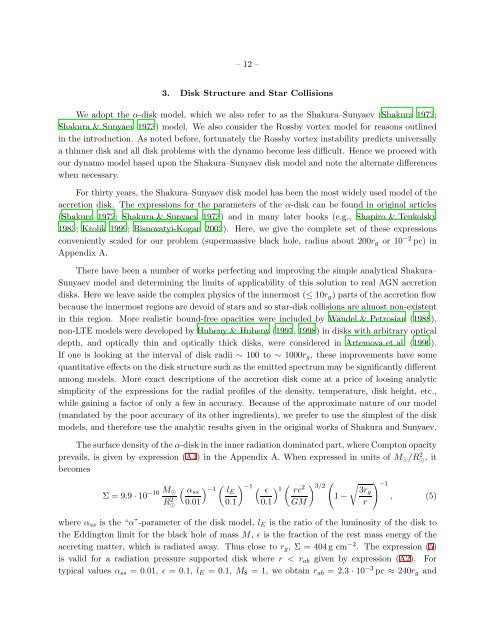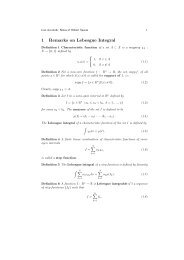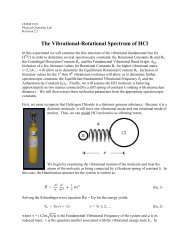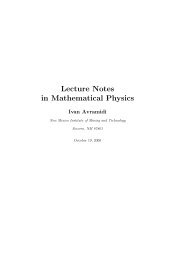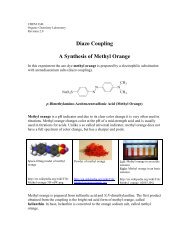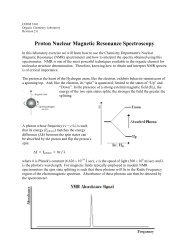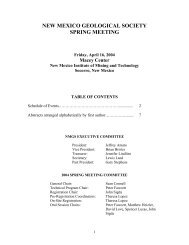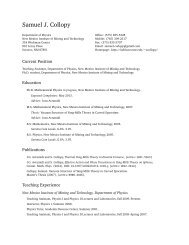A Magnetic α Ï Dynamo in Active Galactic Nuclei Disks - NMT Physics
A Magnetic α Ï Dynamo in Active Galactic Nuclei Disks - NMT Physics
A Magnetic α Ï Dynamo in Active Galactic Nuclei Disks - NMT Physics
You also want an ePaper? Increase the reach of your titles
YUMPU automatically turns print PDFs into web optimized ePapers that Google loves.
– 12 –3. Disk Structure and Star CollisionsWe adopt the α-disk model, which we also refer to as the Shakura–Sunyaev (Shakura 1972;Shakura & Sunyaev 1973) model. We also consider the Rossby vortex model for reasons outl<strong>in</strong>ed<strong>in</strong> the <strong>in</strong>troduction. As noted before, fortunately the Rossby vortex <strong>in</strong>stability predicts universallya th<strong>in</strong>ner disk and all disk problems with the dynamo become less difficult. Hence we proceed withour dynamo model based upon the Shakura–Sunyaev disk model and note the alternate differenceswhen necessary.For thirty years, the Shakura–Sunyaev disk model has been the most widely used model of theaccretion disk. The expressions for the parameters of the α-disk can be found <strong>in</strong> orig<strong>in</strong>al articles(Shakura 1972; Shakura & Sunyaev 1973) and <strong>in</strong> many later books (e.g., Shapiro & Teukolsky1983; Krolik 1999; Bisnovatyi-Kogan 2002). Here, we give the complete set of these expressionsconveniently scaled for our problem (supermassive black hole, radius about 200r g or 10 −2 pc) <strong>in</strong>Appendix A.There have been a number of works perfect<strong>in</strong>g and improv<strong>in</strong>g the simple analytical Shakura–Sunyaev model and determ<strong>in</strong><strong>in</strong>g the limits of applicability of this solution to real AGN accretiondisks. Here we leave aside the complex physics of the <strong>in</strong>nermost (≤ 10r g ) parts of the accretion flowbecause the <strong>in</strong>nermost regions are devoid of stars and so star-disk collisions are almost non-existent<strong>in</strong> this region. More realistic bound-free opacities were <strong>in</strong>cluded by Wandel & Petrosian (1988),non-LTE models were developed by Hubeny & Hubeny (1997, 1998) <strong>in</strong> disks with arbitrary opticaldepth, and optically th<strong>in</strong> and optically thick disks, were considered <strong>in</strong> Artemova et al. (1996).If one is look<strong>in</strong>g at the <strong>in</strong>terval of disk radii ∼ 100 to ∼ 1000r g , these improvements have somequantitative effects on the disk structure such as the emitted spectrum may be significantly differentamong models. More exact descriptions of the accretion disk come at a price of loos<strong>in</strong>g analyticsimplicity of the expressions for the radial profiles of the density, temperature, disk height, etc.,while ga<strong>in</strong><strong>in</strong>g a factor of only a few <strong>in</strong> accuracy. Because of the approximate nature of our model(mandated by the poor accuracy of its other <strong>in</strong>gredients), we prefer to use the simplest of the diskmodels, and therefore use the analytic results given <strong>in</strong> the orig<strong>in</strong>al works of Shakura and Sunyaev.The surface density of the α-disk <strong>in</strong> the <strong>in</strong>ner radiation dom<strong>in</strong>ated part, where Compton opacityprevails, is given by expression (A4) <strong>in</strong> the Appendix A. When expressed <strong>in</strong> units of M ⊙ /R⊙, 2 itbecomesΣ = 9.9 · 10 −10 M ⊙R 2 ⊙( αss) ( ) −1 −1 lE ( ǫ) ( 1 rc2) 3/2(1 −0.01 0.1 0.1 GM√ ) −13rg, (5)where α ss is the “α”-parameter of the disk model, l E is the ratio of the lum<strong>in</strong>osity of the disk tothe Edd<strong>in</strong>gton limit for the black hole of mass M, ǫ is the fraction of the rest mass energy of theaccret<strong>in</strong>g matter, which is radiated away. Thus close to r g , Σ = 404g cm −2 . The expression (5)is valid for a radiation pressure supported disk where r < r ab given by expression (A2). Fortypical values α ss = 0.01, ǫ = 0.1, l E = 0.1, M 8 = 1, we obta<strong>in</strong> r ab = 2.3 · 10 −3 pc ≈ 240r g andr


